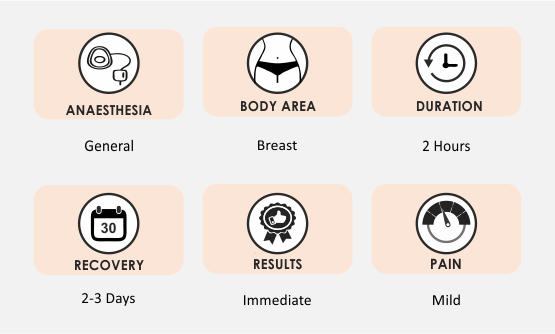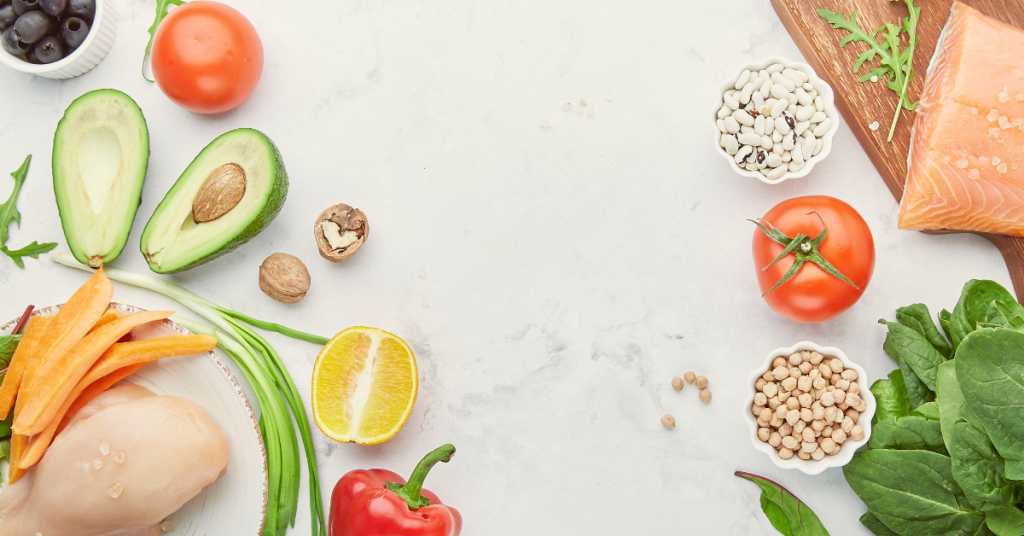What is Breast Reconstruction?
A breast that has been removed due to breast cancer or other medical issues might be rebuilt through surgery known as breast reconstruction. It seeks to improve the chest’s overall symmetry by restoring the breast’s size, shape, and look.
For women who have had a mastectomy or lumpectomy, breast reconstruction may be a crucial step in their physical and psychological recovery.

Why Breast Reconstruction surgery?
Breast reconstruction is a transformative procedure that aims to rebuild the shape and appearance of the breast following mastectomy or lumpectomy due to breast cancer or other medical reasons. Choosing breast reconstruction offers several benefits:
- Restoring Symmetry: Breast reconstruction helps restore balance to your body, improving overall symmetry and alignment.
- Emotional Healing: Feeling complete and confident in your appearance can contribute to emotional healing and an improved self-image.
- Clothing Options: Breast reconstruction can allow you to wear a variety of clothing styles comfortably and confidently.
- Sense of Wholeness: Many women report feeling a sense of wholeness and enhanced well-being after breast reconstruction
Breast Reconstruction method?
Implant-Based Reconstruction: This method involves using saline or silicone breast implants to reconstruct the breast mound. It may require multiple surgeries to achieve the desired outcome.
Autologous Tissue Reconstruction: Also known as flap reconstruction, this technique involves using the patient’s own tissue from another part of the body, such as the abdomen, back, or buttocks, to create the new breast. The two common types of flap reconstruction are the TRAM flap and the DIEP flap.
——————————————————————————————
Breast Reconstruction Using Your Own Tissue (Flap Procedures)
Abdominal (tummy) flaps
It uses tissues from the tummy. Mostly no breast implants are needed along as sufficient tissue is there. Women who are extremely thin or who have previously undergone a belly tuck may not be candidates.
Back flaps
LD or Latissmus dorsi flaps. Often used with a breast implant to add volume. Tunneling of muscle, fat, skin, and blood vessels from your upper back, under the skin to the front of the chest.
Fat grafting
Your own fat is used to assist correct any shape irregularities that may be seen following the initial breast reconstruction surgery.
Thigh flaps
Thigh tissues are frequently considered for breast reconstruction if the abdominal wall (tummy) tissue cannot be utilised.
Buttock flaps
The buttocks (bottom) tissue is used in the gluteal free flap or gluteal artery perforator (GAP) flap to form the breast.
————————————————————————–
Combination Reconstruction: Sometimes, a combination of implant-based and autologous tissue reconstruction may be used to achieve the desired result.
Nipple and Areola Reconstruction: After the primary reconstruction, additional procedures can be performed to create a new nipple and areola on the reconstructed breast.
Breast restoration after Breast Cancer: Fat transfer ( Surgical Video)
Breast Cancer – Diagnosis to Reconstruction | Breast Reconstruction Surgery
Why Choose us for Breast reconstruction?
At our centre, we understand that each patient is unique, and their breast reconstruction journey should be tailored to their specific needs and desires. Here’s why we stand out:
- Expert Surgeons: Meet Dr Anmol Chugh, a renowned, highly skilled, and experienced Board-certified plastic surgeon specializes in breast reconstruction, ensuring the best possible outcomes.
- Comprehensive Approach: We offer a range of breast reconstruction techniques, including implant-based reconstruction, autologous tissue reconstruction (flap reconstruction), and a combination of both, to meet diverse patient needs.
- Personalized Care: We prioritize patient care and communication. Our compassionate staff will guide you through every step of the process, providing support and answering your questions.
- Cutting-edge Technology: Our clinic/hospital is equipped with state-of-the-art technology and facilities to ensure safe and effective breast reconstruction procedures.
- Patient Testimonials: Read inspiring stories from our satisfied patients who have experienced successful breast reconstruction at CK Birla Hospital & Imperio Clinic Gurgaon
Breast Reconstruction Process: How can we help you?
- Consultation: Schedule a personalized consultation with our breast reconstruction experts to discuss your goals, medical history, and the most suitable reconstruction options for you.
- Treatment Plan: Our team will design a comprehensive treatment plan tailored to your unique needs and preferences.
- Surgery: Undergo the breast reconstruction procedure in a safe and caring environment with the support of our skilled surgeons and medical staff.
- Recovery: Our team will provide post-operative care guidelines to ensure a smooth recovery process and minimize discomfort.
- Follow-up: We’ll schedule follow-up appointments to monitor your progress, address any concerns, and provide ongoing support.
Breast Reconstruction: 3 things you must consider
- Reconstruction choices – Discuss with your surgeon all about flap, fat and implants that are there to reconstruct breast.
- Nipple Sparing Mastectomy- Sometimes nipple is spared while removing breast cancer depending on the stage and other factors.
- Insurance- Most good insurance providers cover breast reconstruction after breast cancer surgery.
FAQS
- Good Overall Health
- Cancer Treatment Stage
- Emotional Readiness
- Positive outlook and realistic goals for restoring your breast and body image
- No Smoking
- Willingness for Multiple Procedures
Schedule Your Consultation

Free E‑Book
Refine Your Reflection
Begin Your Wellness Journey
Get your free Essential Wellness Guide crafted by Dr. Anmol Chugh. Simple tips. Real science. Everyday beauty.